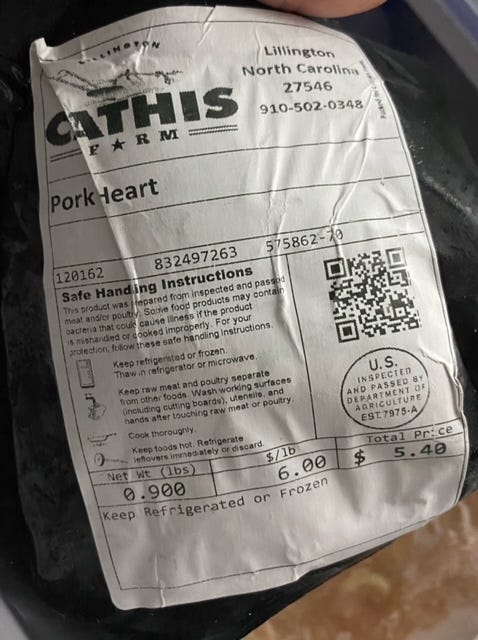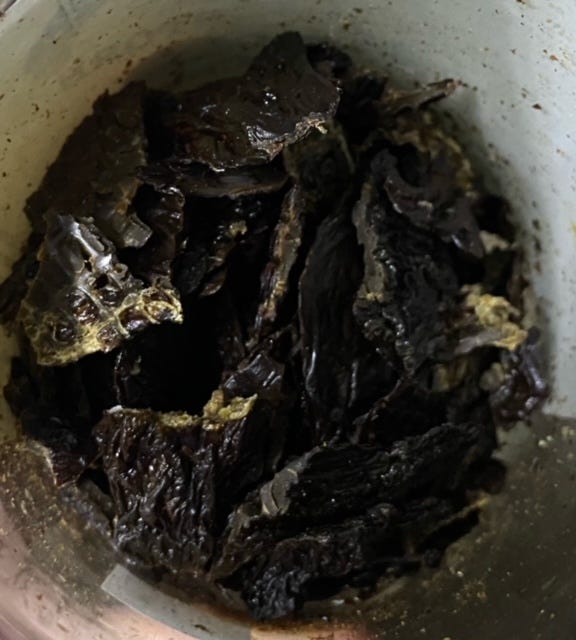Saving money with dehydrating your own dog treats
We brought home an Australian shepherd puppy this year. I wanted to keep his snacks as close to the source as possible. I also didn't want to spend $14 per bag of treats that would be gone in 2 weeks.
Indiana, our puppy named after Indiana Jones, came from a litter that had been provided single-ingredient, whole food, REAL food treats. Indy was used to having rabbit feet and other whole animal parts as part of his diet when we brought him home. We wanted to continue this aspect of Indy’s diet, especially during this early time in his life when he’s growing so rapidly. According to VET SCI, for puppies, “maturation of the immune system occurs from birth to approximately six months old.”
In my earlier (human-centered) post about using dehydrated food as part of your health strategy, I shared the different kinds of dehydrators that I use, including the 9-tray Excalibur. With Labor Day just a week away, you’re uber-fortunate to have Excalibur Labor Day sales already live. Use my link to shop Excalibur dehydrators and use code LBDAY2023 for 25 percent off!
I’ll share several health-related benefits about homemade dehydrated dog treats, but I also wanted point out that pet owners can see training benefits too. According to petMD, “Studies have indicated that rewarding dogs with high-value treats (meats, liver) significantly decreases the time and sessions needed to learn various behaviors compared to dogs given low-value treats (dog kibble).” Productive and positive training sessions can help dogs transition to new environments, feel more confident, and help build your bond with them.

To give a cost comparison, I recently bought a pack of grass-fed beef liver from a local sustainable farm, CATHIS Farm. The package was about a pound and cost less than $7. I cut up the liver into approximately equal-sized pieces, place it in my dehydrator for about 6 hours, then I have treats that last about 4-to-6 weeks. I’ve also purchased pasture-raised chicken livers from the same farm. I prefer getting chicken livers because they’re already perfect treat-sized pieces. However, I’m focused on keeping Indy’s diet diverse, so I mix up the type of animal and the type of organ meat. Recently I bought a pork heart for approximately $5. Once I cut that up and dehydrate it, that will likely last about a month or more.
Liver surfaces in study after study as one of the most nutrient-dense foods on earth. Liver contains numerous vitamins and minerals, iron, potassium, phosphorus, copper, and the list goes on. Dog treats don’t need to be limited to dehydrated liver and other organs. Banana chips, dried peaches and apples, and dehydrated strawberries pack fiber and antioxidants. Since I already dry fruits for my own snacks, I also use them as dog treats for Indy, so there’s no extra effort needed.
The pet food industry, just like the human food industry, is rife with food label confusion and inadequate consumer education programs. Just like “natural” holds no integrity on food labels for human consumption, the same term comes with the same level of ambiguity on pet food. According to a 2014 article in the JOURNAL OF ANIMAL SCIENCE, “Inconsistencies in the definition of natural among international regulatory agencies and the lack of visibility and understanding of regulatory definitions by pet owners have contributed to misperceptions about natural pet food products. Therefore, many natural pet food consumers seek out products or ingredients with claims of human-grade, organic, holistic, ancestral, or instinctual and avoid ingredients perceived as fillers or byproducts…however, these terms are not addressed in the current regulatory definitions of natural.” With so many pet food label terms floating on variable definitions, pet owners can bypass the confusing terms and ingredients by making their own pet treats.
Another benefit, aside from cost and nutrition, is one that’s very close to me. Whole, minimal-to-no-filler dog foods and treats can help avoid allergic reactions and reduce inflammation. Our late dog, Ramsay, passed away 2 years ago. Ramsay had a severe dust mite allergy his entire life, which required him to be on a special diet. Because of his skin reactions and inflammation, I bathed him 2-to-3 times per week and, for several years, I gave him immunotherapy injections. During the first half of his life, I was a single dog mom and often spent more on his monthly care than I did on rent at the time. I bought expensive allergen-free dog treats back then and had no idea that it was possible to dehydrate my own dog treats. I didn’t know what a dehydrator was. Looking back, I could have saved so much money if I had made my own dog treats.
Homemade dog treats using a dehydrator not only help save money on daily pet treats, but if you’re taking a responsible approach to your pet’s entire diet you have an opportunity to reduce their lifetime health care costs. A dog with a healthy and robust immune system could avoid illnesses, chronic conditions, and have a greater capacity to heal.
Indy gets other homemade treats too. I freeze yogurt in ice cube trays, and I bake peanut butter treats with honey (from my bees), oat flour, and apple sauce or pumpkin (from my garden). I still buy dog treats like dehydrated fish (I’d rather avoid the house smelling like fish if I added that to my dehydrator!), water buffalo ears, pig ears, lamb ears, rabbit feet, and chicken feet.
What are your dog’s favorite treats?







I’ve certainly noticed that meat-treats make my dog smarter! ;) Looking forward to using my dehydrator the moment it arrives!
I just love everything you’re doing over there, TL!